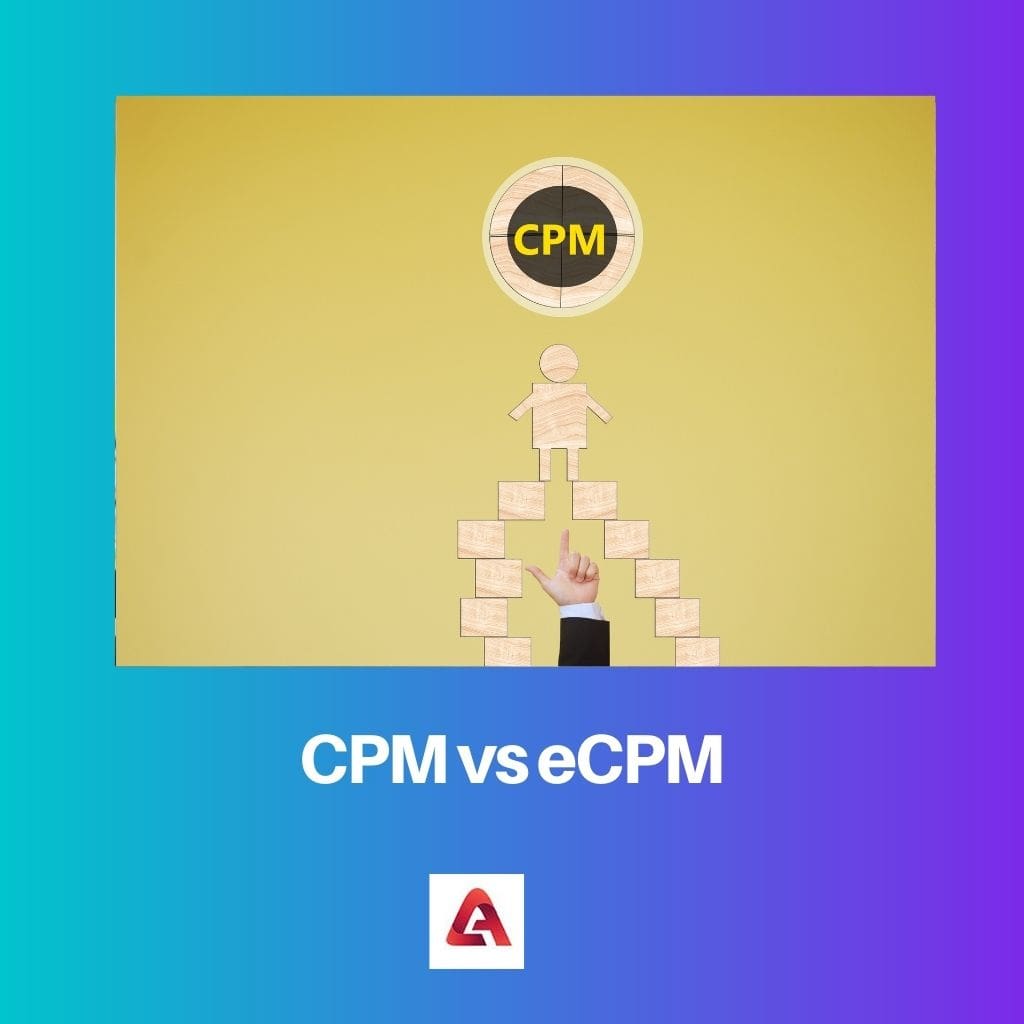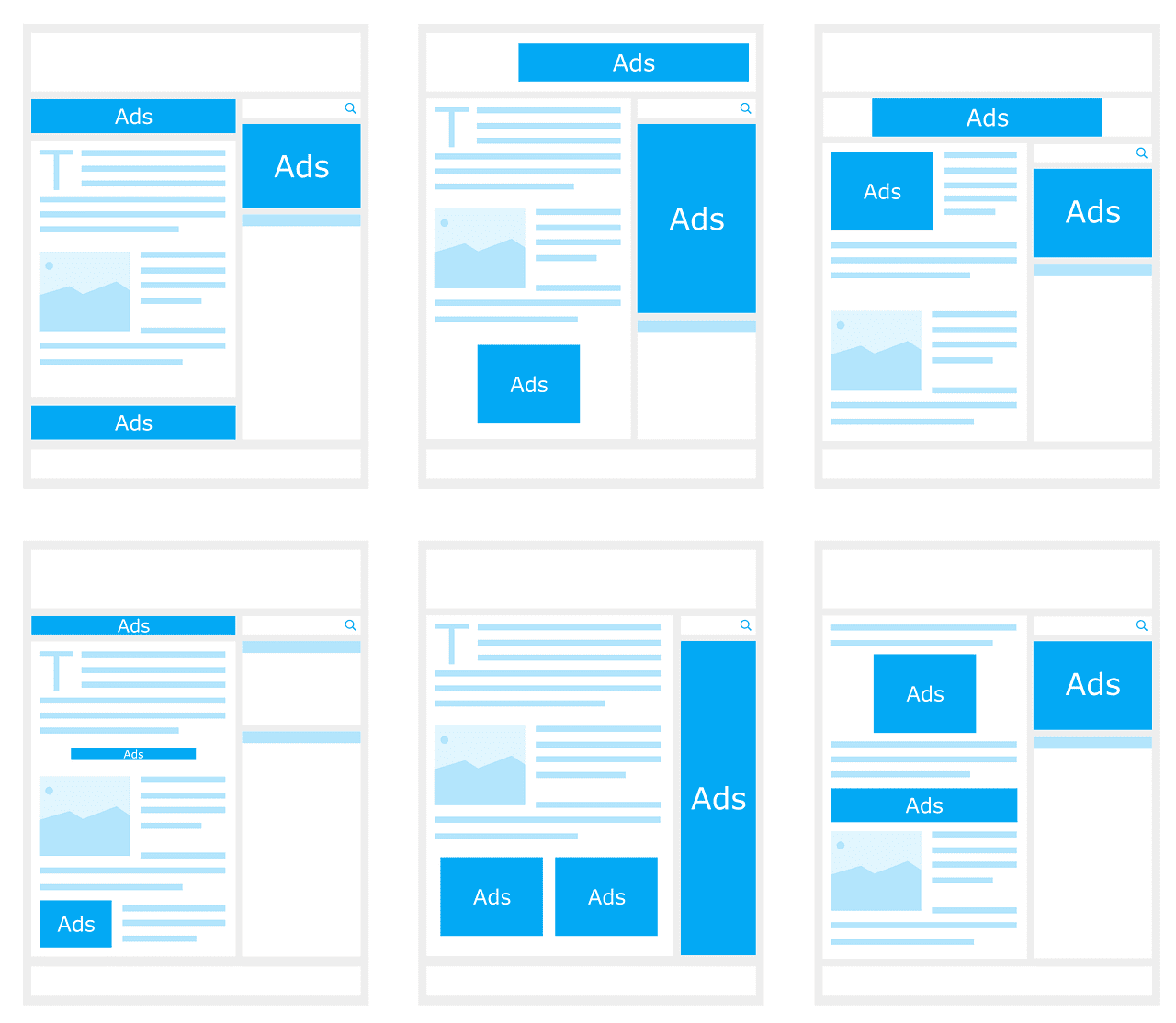CPM (Cost Per Mille) refers to the cost an advertiser pays for one thousand impressions of their ad, regardless of clicks or actions. eCPM (effective Cost Per Mille) calculates the revenue generated per one thousand impressions, factoring in clicks, conversions, and other actions, making it a more accurate measure of ad performance accounting for various engagement metrics.
Key Takeaways
- CPM stands for cost per mille, the cost an advertiser pays for 1,000 ad impressions. In contrast, eCPM stands for effective cost per mille and is a calculated metric considering additional factors like click-through rate (CTR) and conversion rate.
- CPM is a straightforward way to measure the cost of advertising, while eCPM provides a more nuanced understanding of the effectiveness of advertising campaigns.
- CPM and eCPM are commonly used in digital advertising to help advertisers evaluate the success of their campaigns and optimize their spending.
CPM vs eCPM
The difference between CPM and eCPM is that CPM is the buying model for publishing an advertisement. In contrast, eCPM is the metric that reveals the marketing campaign’s effectiveness, which gives the revenue generated effectively for every 1000 impressions of the ad.

Comparison Table
| Feature | CPM | eCPM |
|---|---|---|
| Who uses it? | Advertisers | Publishers |
| Purpose | Measures the cost per 1,000 impressions | Measures the revenue earned per 1,000 impressions |
| Calculation | Cost of ad campaign / Total impressions (x 1,000) | Total ad revenue / Total impressions (x 1,000) |
| Focus | Cost of reaching an audience | Revenue generated from showing ads |
| Pricing Model | Used in CPM (Cost per Mille) pricing model | Can be used in various pricing models (CPM, CPC, etc.) |
| Example | Advertiser pays $2 for every 1,000 impressions | Publisher earns $1.50 for every 1,000 impressions |
What is CPM?
Definition:
CPM, which stands for Cost Per Mille, is a common metric used in advertising that represents the cost an advertiser pays for one thousand impressions of their ad. This metric is primarily used in display advertising, where advertisers pay for the number of times their ad is displayed to users, regardless of whether or not users interact with the ad.
Calculation:
The calculation for CPM is straightforward. It is calculated by dividing the total cost of the advertising campaign by the total number of impressions generated, and then multiplying the result by 1000 to normalize it to a cost per thousand impressions.
Example:
For example, if an advertiser runs a display advertising campaign with a total cost of $1000 and generates a total of 100,000 impressions, the CPM would be calculated as follows:
CPM = (Total Cost / Total Impressions) * 1000 = ($1000 / 100,000) * 1000 = $10
Therefore, the CPM for this advertising campaign would be $10, meaning the advertiser pays $10 for every one thousand impressions of their ad.
Usefulness:
CPM is useful for advertisers and publishers to understand the cost-effectiveness of their advertising campaigns and inventory. It allows them to compare the cost of reaching a thousand users across different advertising channels and platforms. However, it’s important to note that CPM does not take into account user engagement or actions taken on the ad, so it may not fully reflect the effectiveness of an ad campaign in driving desired outcomes.

What is eCPM?
Definition:
eCPM, or Effective Cost Per Mille, is a metric used in digital advertising to measure the revenue generated per one thousand impressions. Unlike traditional CPM, which represents the cost an advertiser pays for impressions, eCPM calculates the revenue earned by publishers for displaying ads, factoring in various engagement metrics such as clicks, conversions, or other actions.
Calculation:
The calculation for eCPM varies slightly depending on the specific engagement metrics used, but generally, it is calculated by dividing the total earnings generated from an ad campaign by the total number of impressions, and then multiplying the result by 1000 to normalize it to a revenue per thousand impressions.
Example:
Suppose a publisher earns a total of $500 from displaying ads and generates a total of 200,000 impressions. Additionally, the ads received a total of 2,000 clicks during the campaign. The eCPM would be calculated as follows:
eCPM = (Total Earnings / Total Impressions) * 1000 = ($500 / 200,000) * 1000 = $2.50
Therefore, the eCPM for this advertising campaign would be $2.50, indicating that the publisher earns $2.50 for every one thousand impressions of the ad, considering clicks as an engagement metric.
Usefulness:
eCPM is a valuable metric for publishers as it provides insights into the effectiveness of their ad inventory in generating revenue. By analyzing eCPM, publishers can optimize their ad placements, formats, and targeting strategies to maximize their earnings. Additionally, eCPM allows publishers to compare the performance of different ad campaigns or networks and make informed decisions to improve monetization strategies.

Main Differences Between CPM and eCPM
- CPM (Cost Per Mille):
- Represents the cost an advertiser pays for one thousand impressions of their ad.
- Does not take into account user engagement or actions on the ad.
- Calculated by dividing the total cost of the advertising campaign by the total number of impressions and multiplying by 1000.
- eCPM (Effective Cost Per Mille):
- Measures the revenue generated per one thousand impressions for publishers.
- Factors in user engagement metrics such as clicks, conversions, or other actions.
- Calculated by dividing the total earnings generated from an ad campaign by the total number of impressions and multiplying by 1000.